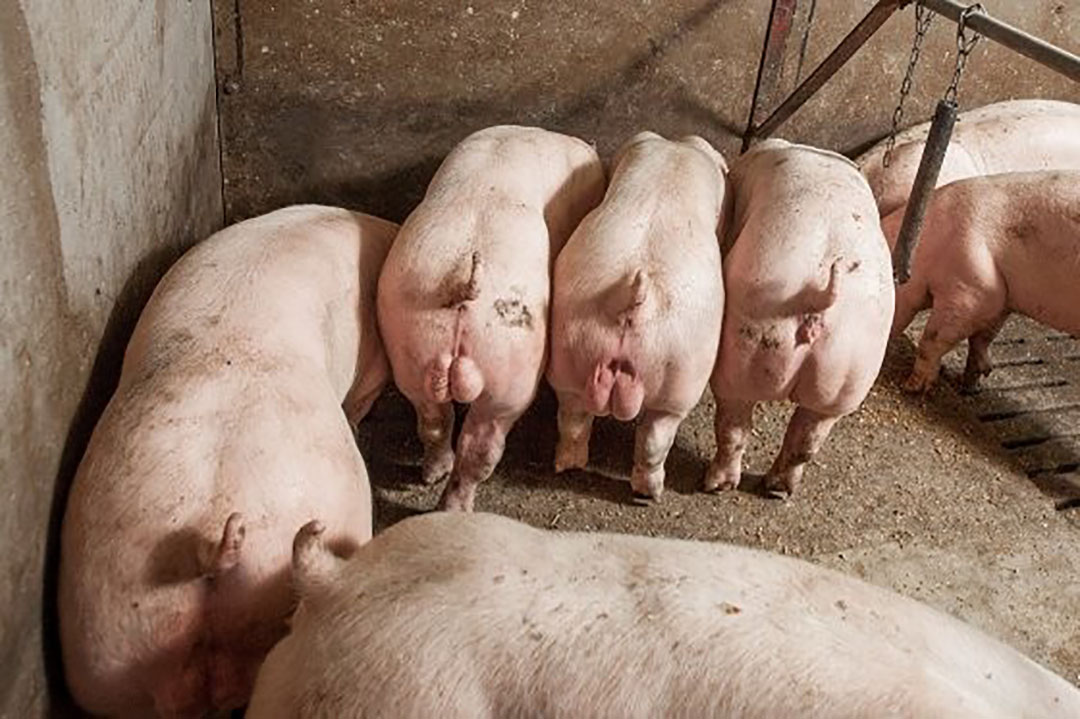Boar taint reducing feed on trial in Germany

A special feed aimed at the reduction of boar taint will be tested as of this month on a large farm in Eastern Germany. The trial will be happening on a 5,000 sow farm, with a finishing capacity of 60,000 pigs.
The approach, called Taintstop, reduces boar taint as in-feed additives and fibres break down skatole inside the pig’s intestines, which effectively means that the liver is freed up for other duties, like the breaking down of the other compound causing boar taint: androstenone.
A large German retailer has shown interest in the approach, which is produced and marketed by Belgian feed company Dumoulin. The company claims that a maximum of 1% of Taintstop-fed boars on the slaughterline eventually will have boar taint.
The trials shall be carried out under the supervision of an independent institute with a total of 2,000 boars.
Trials with various pig breeds
Werner Reuter, head of research at Dumoulin, explained at the recently held livestock event AgriFlanders in Belgium, that the company has carried out 14 trials so far, with various breeds. The company tested the results on offspring of e.g. DanBred, Topigs and PIC sows. Mr Reuter explained that the risk of boar taint is mainly occurring with Duroc genetics.
Mr Reuter said: “There is no such thing as 0% risk. Within the group of boars fed Taintstop there is a maximum of 1% with boar taint,” adding that, even with barrows and gilts tainted carcasses can occur.
Worldwide interest for feeding approach
Mr Reuter added that the international interest has grown for the strategy since EuroTier, held in November 2018. At the show, Taintstop won a silver medal. In for instance Brazil, Canada, Colombia and Mexico producers have expressed interest in Taintstop to reduce the risk of tainted carcasses.
In addition, in France, the feed has been tested with boars that would be slaughtered at on average 120 kg liveweight.
Additional costs of the feed strategy is about € 3-4. The animal nutrition company has been trying to create a simpler version of the feed concept, aiming to reduce costs. Mr Werner said that that did not prove possible, which effectively means that the components haven’t changed. The company advises to feed the product about 2 weeks prior to slaughter.











